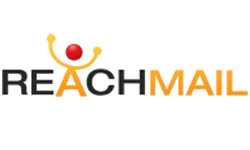Email marketing has become the cornerstone of digital marketing strategies, and in 2024, the competition between various tools is more intense than ever. Among the plethora of options available, Omnisend and ReachMail have emerged as frontrunners. But which one takes the crown as the best email marketing tool for 2024? Let’s dive in and compare these two giants in a detailed and engaging way.
| Omnisend | ReachMail |
|---|---|
 |  |
| G2 Score – 4.5 out of 5 stars | G2 Score – 4.0 out of 5 stars |
| TrustRadius Score – 6.0 out of 10 | TrustRadius Score – 10.0 out of 10 |
User Experience and Interface
First impressions matter, and in the world of email marketing tools, this translates to the user experience (UX) and interface. A great tool should not only be powerful but also intuitive and easy to navigate. Let’s compare how Omnisend and ReachMail fare in this crucial aspect.
Omnisend: A Streamlined Approach
Omnisend is renowned for its user-friendly interface. From the moment you log in, you’re greeted with a clean, streamlined dashboard that’s both pleasing to the eye and functional. The layout is intuitive, with clearly labeled sections for campaigns, automation, reports, and audience management. This simplicity is Omnisend’s strength, making it an ideal choice for beginners and seasoned marketers alike.
The beauty of Omnisend’s interface lies in its drag-and-drop email builder. It’s a delight to use, especially for those who lack coding skills. You can easily choose from a variety of templates and customize them to your heart’s content. Adding images, text blocks, and buttons is a breeze, and you can see your email take shape in real-time, which is incredibly satisfying.
Moreover, Omnisend’s automation workflows are straightforward. Setting up automated emails based on customer behavior, like abandoned cart reminders or welcome sequences, is done through a simple, visual process. This level of simplicity in creating complex automation sequences is a significant advantage for businesses looking to enhance their email marketing without getting bogged down in technical details.
ReachMail: Functionality Meets Flexibility
ReachMail, on the other hand, takes a slightly different approach. It leans more towards functionality and flexibility, catering to users who prefer having more control and options at their disposal. The interface is robust, with a myriad of features neatly organized, albeit with a slightly steeper learning curve compared to Omnisend.
The platform offers advanced segmentation features, allowing you to drill down into your audience’s behaviors and preferences with precision. This segmentation capability is a game-changer for marketers who want to tailor their messages to specific groups within their audience for maximum impact.
In terms of email design, ReachMail offers a solid email builder, though it might not be as intuitive as Omnisend’s. It compensates for this with a wide range of customization options. You can tweak every aspect of your email, from font styles to layout structures. For those who are comfortable with HTML, ReachMail provides the flexibility to dive into the code and make detailed adjustments.
And the Winner Is…
When it comes to user experience and interface, the choice between Omnisend and ReachMail boils down to personal preference and skill level. Omnisend is the go-to for simplicity and ease of use, making it an excellent choice for those who value a straightforward, no-fuss approach. ReachMail, however, shines for users who crave depth and customization, and don’t mind a bit of a learning curve.
In the end, the best tool is the one that aligns with your needs and skills. Whether you prioritize ease of use or customization capabilities will guide your choice between these two impressive platforms.
Automation and Workflow Capabilities
In the realm of email marketing, automation is not just a luxury; it’s a necessity. The ability to automate workflows and tailor messages based on user behavior can dramatically increase the effectiveness of your campaigns. Let’s explore how Omnisend and ReachMail stack up in terms of their automation features.
Omnisend: Elevating Automation to an Art Form
Omnisend takes automation very seriously. The platform offers a range of pre-built automation workflows that are incredibly user-friendly. These workflows are designed to cater to common ecommerce scenarios, such as cart abandonment, post-purchase follow-ups, and birthday greetings. The beauty of these pre-built workflows is that they are not just templates; they are crafted based on best practices and proven strategies, ensuring high engagement and conversion rates.
Customization is also a forte for Omnisend. You can modify these workflows to suit your specific needs, adding or removing steps as you see fit. For example, you can easily integrate SMS messages into your email sequences, a feature that is particularly useful in a mobile-first world.
Another standout feature of Omnisend is its smart segmentation within automation workflows. You can segment your audience based on their shopping behavior, campaign engagement, and more. This allows for incredibly targeted and personalized emails, which are known to drive better results.
ReachMail: Offering Flexibility and Depth
ReachMail approaches automation with a focus on flexibility and depth. The platform allows for more granular control over automation workflows, which can be a double-edged sword. On one hand, it’s fantastic for users who want to dive deep into customization and have specific needs that require intricate workflows. On the other hand, it can be overwhelming for beginners or those who prefer a more straightforward approach.
ReachMail’s automation tools are powerful. You can create complex sequences based on a variety of triggers and conditions. For example, you can set up a series of emails triggered by a user’s specific action on your website, like visiting a particular page or viewing a certain product. This level of detail enables you to create highly personalized and effective campaigns.
Additionally, ReachMail offers excellent tools for A/B testing within your automation sequences. This feature is invaluable for optimizing your emails for maximum engagement and conversion. You can test different subject lines, content, and even send times to see what resonates best with your audience.
Making the Right Choice
When it comes to automation, the choice between Omnisend and ReachMail depends largely on your needs and expertise. Omnisend offers an easier, more guided experience with pre-built, customizable workflows that are great for businesses looking for effective automation without the complexity. ReachMail, meanwhile, caters to those who want in-depth control and are willing to invest the time in building and optimizing custom automation sequences.
Both platforms offer powerful tools to automate your email marketing campaigns, but the best choice for you will depend on how deep you want to go into the automation rabbit hole.
Analytics and Reporting: Measuring Success
Analytics and reporting are crucial for understanding the impact of your email marketing efforts. It’s essential to have clear, actionable insights to optimize your campaigns. Let’s see how Omnisend and ReachMail help you measure success.
Omnisend: Insightful and User-Friendly Analytics
Omnisend excels in providing analytics that are both comprehensive and easy to understand. The platform offers a dashboard that presents key metrics such as open rates, click-through rates, and conversion rates in a visually appealing and digestible format. This makes it easy for marketers to quickly assess the performance of their campaigns.
Beyond the basics, Omnisend offers deeper insights into customer behavior. You can track the journey of your customers from the email to the purchase, giving you a clear view of how your campaigns are driving sales. This level of detail is invaluable for e-commerce businesses that want to understand the direct impact of their email marketing on revenue.
Another standout feature is the ability to track the performance of automation workflows. Omnisend not only shows you how each email in a sequence is performing but also gives insights into the overall effectiveness of the workflow. This helps in fine-tuning your automation strategies for better engagement and conversion.
ReachMail: Advanced Analytics for Data-Driven Marketers
ReachMail takes a more data-driven approach to analytics. The platform provides a wealth of data that can satisfy even the most detail-oriented marketers. You get all the standard metrics, but with a level of granularity that allows for deep dives into the data.
One of the powerful aspects of ReachMail’s analytics is the segmentation capability. You can segment your reporting to analyze how different groups within your audience are responding to your campaigns. This feature is particularly useful for larger businesses or those with diverse customer bases, as it allows for tailored strategies for different segments.
ReachMail also offers robust A/B testing analytics. You can compare different versions of your emails side-by-side to see which elements are performing best. This empowers marketers to continually refine their campaigns based on solid data.
Choosing the Right Tool for Your Analytics Needs
If you’re looking for analytics that are straightforward and provide clear, actionable insights with a focus on e-commerce, Omnisend is an excellent choice. Its user-friendly interface makes it easy for anyone to understand their campaign performance at a glance.
For those who crave detailed, data-heavy analytics and enjoy drilling down into the numbers, ReachMail is the better option. Its advanced features provide the depth required for comprehensive analysis and optimization.
Both Omnisend and ReachMail offer powerful analytics capabilities, but your choice will depend on how deep you want to dive into your data and what kind of insights you’re looking to gain from your email marketing campaigns.

Related: Check out our free SEO suite

Integration and Compatibility: Expanding Your Marketing Ecosystem
In today’s digital marketing landscape, the ability of an email marketing tool to integrate seamlessly with other platforms is vital. A good tool should work in harmony with your existing tech stack, be it e-commerce platforms, CRM systems, or social media channels. Let’s see how Omnisend and ReachMail fare in terms of integration and compatibility.
Omnisend: A Holistic Approach to Integration
Omnisend understands the importance of being a team player in your marketing toolbox. The platform offers a wide range of integrations with popular e-commerce platforms like Shopify, BigCommerce, and Magento. This seamless integration allows for the automatic synchronization of customer data and behaviors, which is crucial for creating targeted and personalized email campaigns.
Beyond e-commerce platforms, Omnisend also integrates well with various CRM systems, social media platforms, and even lead generation tools. This extensive compatibility makes it an excellent choice for businesses that use a diverse set of tools and want to ensure a smooth flow of data across their marketing ecosystem.
One of the highlights of Omnisend’s integration capabilities is its ease of use. The process of linking other platforms to Omnisend is generally straightforward, often requiring just a few clicks. This ease of integration is a big plus for businesses that want to avoid the complexities of setting up and managing multiple integrations.
ReachMail: Flexible and Customizable Integrations
ReachMail takes a slightly different approach to integration. While it offers a range of out-of-the-box integrations with popular platforms, its real strength lies in its flexibility and customizability. The platform provides robust APIs that allow for deep integrations tailored to specific business needs.
For businesses with unique systems or custom-built platforms, ReachMail’s API capabilities are a significant advantage. It allows for a level of customization in integration that is not always possible with other email marketing tools. This makes ReachMail an attractive option for larger businesses or those with specialized requirements.
ReachMail also supports integration with major e-commerce platforms and CRM systems, ensuring that it can fit into most marketing stacks without much hassle. However, setting up these integrations might require a bit more technical know-how compared to Omnisend, especially when leveraging the full power of its API.
Making the Right Integration Choice
If you’re looking for a tool that offers easy and seamless integration with a wide range of platforms, especially for e-commerce, Omnisend is the way to go. Its user-friendly approach to integration makes it a great choice for businesses that want to quickly connect their various marketing tools.
On the other hand, if your business requires more customized integrations or you have a unique tech stack, ReachMail’s flexibility and robust API might be more suited to your needs. It offers the depth required for more complex integration scenarios.
Both Omnisend and ReachMail provide strong integration capabilities, but your choice will depend on the level of customization and ease of integration you require.
Pricing and Value for Money: Balancing Cost and Features
One of the most crucial aspects to consider when choosing an email marketing tool is the pricing structure and the value you get for your investment. Both Omnisend and ReachMail offer a range of pricing options, but it’s essential to understand how these align with the features and capabilities they provide. Let’s delve into their pricing models and evaluate their value for money.
| Omnisend | Free Plan: Includes basic email marketing features, allowing up to 15,000 emails per month but with a daily limit. Standard Plan: Starts around $16 per month for up to 500 subscribers, including automation workflows, SMS campaigns, and audience segmentation. Pro Plan: Starting from around $99 per month for up to 500 subscribers, adding features like advanced reporting, web push notifications, and unlimited emails. Enterprise Plan: Custom pricing for large-scale businesses, offering features like dedicated account management, deliverability support, and custom IP address. |
| ReachMail | Pricing is based on the volume of emails sent per month: Plans start from around $10 per month for up to 7,500 emails, with various tiers up to over $70 per month for higher volumes. Features include list management, detailed reporting, and advanced segmentation. Custom enterprise solutions are also available, which include additional features and dedicated support. |
Omnisend: Flexible Pricing for Growing Businesses
Omnisend’s pricing structure is designed to accommodate businesses of different sizes and needs. They offer a free plan, which is quite generous in terms of features and allows small businesses or startups to get a taste of what the platform can offer. As your business grows, you can scale up to their paid plans, which are tiered based on the number of subscribers and the level of features you need.
The key advantage of Omnisend’s pricing is the balance between cost and features. Even at the lower-tier paid plans, you get access to a comprehensive set of tools, including advanced segmentation, automation, and a good selection of integrations. This makes Omnisend a cost-effective option for small to medium-sized businesses looking for a robust email marketing tool without breaking the bank.
Another aspect where Omnisend shines is its scalability. As your subscriber list grows and your needs become more complex, upgrading your plan is straightforward, and the additional features you unlock, like more advanced reporting and increased automation capabilities, are well worth the investment.
ReachMail: Customized Pricing for Tailored Needs
ReachMail approaches pricing differently. Instead of tiered plans, they offer customized pricing based on your specific requirements. This means that you pay for exactly what you need, which can be a significant advantage for businesses with unique requirements or those who want more control over their spending.
This customization in pricing allows ReachMail to cater to a wide range of businesses, from small startups to large enterprises. The flexibility to tailor your plan based on factors like email volume, list size, and the specific features you need can lead to cost savings, especially for businesses that don’t fit neatly into the standard tiers offered by other platforms.
However, the downside to customized pricing is that it can be less transparent. You might need to engage in discussions with ReachMail’s sales team to get a clear idea of what your costs will be, which can be a deterrent for those who prefer straightforward, easy-to-understand pricing structures.
Weighing Cost Against Features
When choosing between Omnisend and ReachMail based on pricing and value for money, consider your business’s current size and growth trajectory. Omnisend is a great choice if you prefer a straightforward pricing structure with a clear path for scaling up as your business grows. Its balance of cost and features makes it an attractive option for small to medium-sized businesses.
For businesses with unique needs or those who want a more tailored approach to pricing, ReachMail is the better choice. Its customized pricing model ensures that you only pay for what you need, which can be cost-effective for specific use cases or larger businesses.
In summary, both Omnisend and ReachMail offer competitive pricing, but the best choice depends on your preference for pricing structure and the specific features you need at your current stage of business growth.
Customer Support and Resources: Ensuring a Smooth Experience
Reliable customer support and a wealth of resources are vital for navigating any email marketing tool effectively. Let’s examine how Omnisend and ReachMail stand in terms of their support systems and the resources they provide to users.
Omnisend: Comprehensive Support and Learning Resources
Omnisend places a strong emphasis on customer support and education. They offer a range of support options, including email, live chat, and a help center. The responsiveness and helpfulness of their support team are often highlighted by users. Whether you’re facing a technical issue or need guidance on best practices, the support team is readily available to assist.
In addition to direct support, Omnisend offers an extensive library of resources. This includes detailed guides, how-to articles, and video tutorials covering various aspects of email marketing. These resources are not only helpful for resolving issues but also for learning new strategies and getting the most out of the platform.
Omnisend also provides a community forum where users can share tips, ask questions, and learn from each other. This peer-to-peer support mechanism is a valuable resource, especially for businesses that are new to email marketing.
ReachMail: Tailored Support and Advanced Assistance
ReachMail also offers strong customer support, with a focus on providing tailored assistance. Their support team is known for being knowledgeable, especially when it comes to addressing complex queries or unique scenarios. Like Omnisend, they offer support via email and live chat, ensuring users can get help when they need it.
Where ReachMail stands out is in its provision of advanced support for custom integrations and technical issues. Their team is well-equipped to assist with more technical aspects, which is a significant advantage for businesses with customized setups or those using ReachMail’s API.
Regarding resources, ReachMail provides a solid collection of guides and tutorials. While their library may not be as extensive as Omnisend’s, it covers all the essential topics and offers clear, concise information to help users navigate the platform and improve their email marketing strategies.
Evaluating Support and Resources
Both Omnisend and ReachMail excel in customer support, but their approaches cater to different needs. Omnisend is ideal for businesses looking for comprehensive support and a wealth of learning resources. Their extensive library and community forum are great for users who enjoy self-learning and peer interaction.
ReachMail, on the other hand, is more suited for businesses that may require advanced technical support, especially those utilizing custom integrations or complex setups. Their tailored approach to support ensures that even the most technical issues can be resolved efficiently.
When choosing between the two, consider the level of support you anticipate needing and the type of resources that will be most beneficial for your team. If you value a wide range of learning materials and community interaction, Omnisend is a great choice. If you foresee needing more specialized technical support, ReachMail might be better suited to your needs.
Conclusion
When it comes to selecting the best email marketing tool for 2024, both Omnisend and ReachMail have their unique strengths and cater to different business needs. Omnisend shines with its user-friendly interface, making it a great choice for those new to email marketing or who value simplicity and ease of use. Its automated workflows are intuitive and its integration with e-commerce platforms is seamless, making it an ideal choice for small to medium-sized e-commerce businesses.
ReachMail, on the other hand, offers more advanced customization and flexibility, especially with its robust API and detailed analytics. It’s well-suited for larger businesses or those with specific, complex requirements. Its tailored pricing model and advanced technical support make it a strong contender for businesses with unique needs. In terms of customer support and resources, both platforms are strong, but Omnisend’s extensive library and community forum provide an added advantage for ongoing learning and peer support.
Ultimately, the decision between Omnisend and ReachMail depends on your specific business requirements, technical expertise, and growth plans. Omnisend is ideal for those seeking an easy-to-use, feature-rich platform for growing e-commerce businesses, while ReachMail is more suitable for larger or more technically oriented organizations requiring customized solutions. In the rapidly evolving world of email marketing, both Omnisend and ReachMail offer compelling features and capabilities, making them top contenders in 2024. Your choice will hinge on which platform aligns best with your business’s current needs and future aspirations.
Read Next:
- Mailjet vs Elastic Email: The Best Email Marketing Tool for 2024
- Mailjet vs Iterable: The Best Email Marketing Tool for 2024
- Mailjet vs Mailercloud: The Best Email Marketing Tool for 2024
- Mailjet vs Mad Mimi: The Best Email Marketing Tool for 2024
- Mailjet vs MoonMail: The Best Email Marketing Tool for 2024






















Comments are closed.